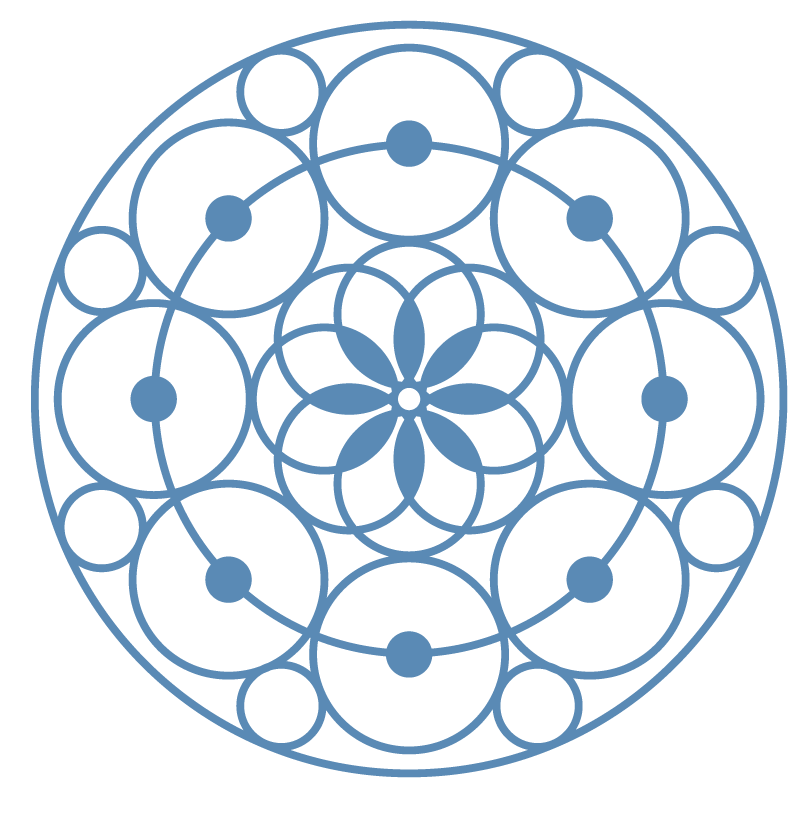Compassionate Touch for Deep Connection
I grew up surrounded by people, especially female-bodied people, who had learned to fear touch–a fundamental human need. In the wake of the pandemic and an epidemic of loneliness, we have become more sharply aware that we are touch-starved.
In May 2023, US Surgeon General Dr. Vivek Murthy issued an advisory highlighting the public health crisis of loneliness and isolation–one that has a mortality impact comparable to smoking up to 15 cigarettes a day (Kidambi & Lee, 2020).
Currently, 20% of U.S. adults experience loneliness on a daily basis, marking the highest rate of reported loneliness in the past two years (James & Witters, 2024).
In America today, most of our experiences with touch are reserved for a select few people in our lives–our family, our friends, and our partners. Experiences of touch, particularly those that are platonic and with strangers, are few and far between.
As a massage therapist of over half a decade, my encounters with touch through my massage education and practice have been among the most connecting and healing moments of my entire life.
Hundreds of times now, I have witnessed a profound transformation in my clients, after receiving the simplest warm touch from my hand. Surprisingly, this change occurs before I begin massaging: I always open contact with clients by placing a still hand on them, wishing them love, healing, health, and prosperity. In moments, their mental barriers visibly come down, and I am welcomed into the intimate doors of their embodied histories and lives.
Over the past 5 years, I have taught many small massage workshops, demonstrating techniques and correcting students on their form. Eventually I realized that what people really desire is actually more simple than the technique of a good massage: they want to connect with others non-sexually through touch, in a safe container.
Touch is intimately connected to trust-building and oxytocin-mediated social bonding (Feldman et al., 2011). The gentle, rhythmic pressure on the skin from massage activates sensory nerves that communicate with the hypothalamus, triggering oxytocin release, often referred to as the ‘bonding hormone.’
This neuropeptide plays a crucial role in social bonding, trust, and emotional connection. Morhenn et al. (2008) demonstrated that massage therapy increases oxytocin levels, fostering sentiments of trust and emotional warmth in participants. Massage also activates C-Tactile Fibers, specialized nerve fibers that react to slow, gentle touch, transmitting signals to the brain regions involved in emotional and social processing. Stimulation of these fibers generates a calming and pleasurable sensation, bolstering sentiments of care and connection (Olausson et al., 2002).
Physical touch communicates a sense of security and compassion, encouraging trust and an openness to engage in reciprocal social interactions.
Another mechanism by which touch enhances connection is by significantly reducing cortisol (stress hormone) levels, while significantly increasing levels of serotonin and dopamine neurotransmitters, which ameliorate mood and foster sentiments of contentment and connection (Field et al., 2005). As cortisol reduction facilitates a more relaxed nervous system, this cultivates significantly more emotional receptivity to other people (Field, 2014). The resulting higher levels of serotonin and dopamine also contribute to decreasing emotional barriers and nurturing our capacity to connect with others (Field et al., 2005).
To top off this happy chemical cocktail, researchers Gallese et al. (2004) have found that receiving compassionate touch can activate mirror neurons, which allow us to empathize with and understand others’ emotions. This makes it a powerful tool for interpersonal attunement and emotional resonance for humans who live in an age of decreased in-person social connection and physical touch.
Inspired by this knowledge and my personal experiences, I developed a free workshop open to anyone, regardless of background, to explore the ways compassionate touch can harness deeper connection and loving kindness within themselves and with others. I recruited two other licensed massage therapists and an embodiment facilitator to assist and co-facilitate. Informed by our training in Reiki, partner dancing, massage, and our experience working with inpatient psychiatric trauma patients, the four of us developed a well-rounded curriculum. The workshop includes an introduction on consent, group and partner exercises including massage, exploration of hands and energy sharing, sensory awareness exercises, mindfulness and self-massage techniques, light and deep touch practices, and reflection and integration circles.
Since the initial development of this workshop, we have offered it for free four times, at a local spiritual center and arts festivals in Vermont and in Canada. While we aim to bring this workshop to more specific populations, such as the elderly and trauma survivors, it is currently open to mixed-gendered participants. The benefit being that we can reach anyone who may have had negative touch interactions with members of the opposite sex in the past and re-establish touch as a positive experience.
As one participant reflected, “I personally found it very healing and because I live alone and work from home I lack spaces to have real social connection and positive energy. I generally feel that we heal through others. Especially being female-bodied where there is toxic masculinity in society and touch can be considered frightening or negative, it is good to be in mixed gender groups.”
Outside of this workshop, I try to apply these principles of compassionate touch daily with all my clients, my loved ones, friends, and roommates, whether I am giving them a massage or a quick hug. I can already feel a positive difference in how my clients receive my massages and continued trust, closeness, and depth in my other relationships and connections.
We all have the innate capacity to be massage therapists for ourselves, our partners, our friends, and strangers; to regain freedom and love through experiences of touch. Through giving and receiving massage, we can spread the joy and healing of compassionate touch to our communities, which in turn, can create ripples for a more loving and compassionate world.
Citations:Field, T. (2005). The effects of touch on human health. American Psychologist, 60(3), 226-233. https://doi.org/10.1037/0003-066X.60.3.226Field, T. (2014). Touch and social bonding in infants and adults. Developmental Review, 34(4), 331-337. https://doi.org/10.1016/j.dr.2014.05.002Feldman, R., Gordon, I., & Zagoory-Sharon, O. (2011). The cross-generation transmission of love and fear: Psychobiological mechanisms of parenting. Current Directions in Psychological Science, 20(6), 334-338. https://doi.org/10.1177/0963721411424747Gallese, V., Keysers, C., & Rizzolatti, G. (2004). A unifying view of the basis of social cognition. Trends in Cognitive Sciences, 8(9), 396-403. https://doi.org/10.1016/j.tics.2004.07.002James, A., & Witters, D. (2024). Loneliness in America: A snapshot. Gallup. Retrieved from https://www.gallup.comKidambi, G., & Lee, S. (2020). Loneliness and health: The impact of social isolation. Journal of Health Psychology, 25(4), 413-420. https://doi.org/10.1177/1359105319877223Morhenn, V., Park, J., & Ziegler, T. E. (2008). Massage increases oxytocin in humans. Journal of Psychosomatic Research, 65(1), 1-7. https://doi.org/10.1016/j.jpsychores.2008.01.004Olausson, H., Wessberg, J., Morrison, I., McGlone, F., & Vallbo, Å. (2002). Acute and selective activation of a human C fiber subpopulation: Implications for tactile processing. Journal of Neuroscience, 22(15), 5583-5588. https://doi.org/10.1523/JNEUROSCI.22-15-05583.2002

